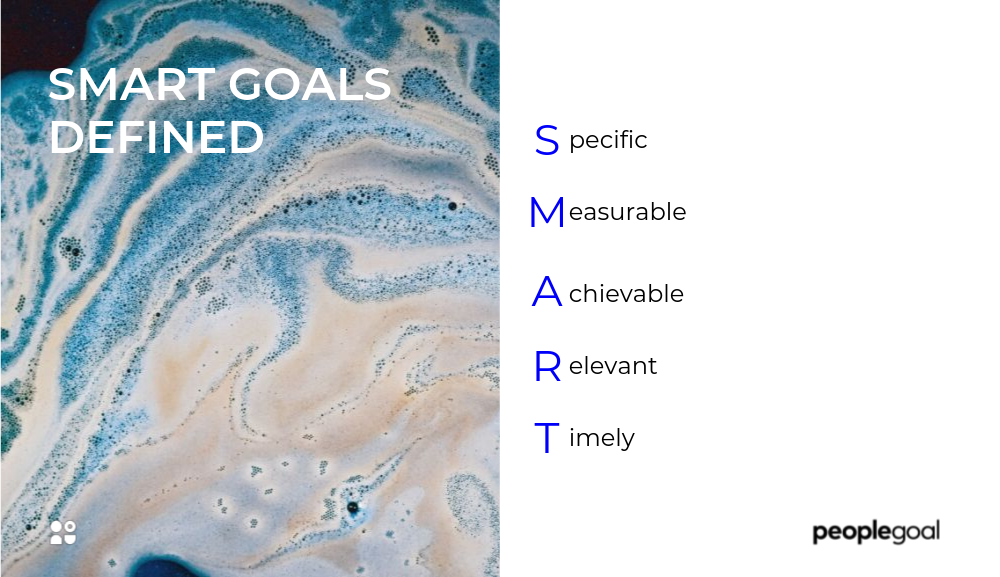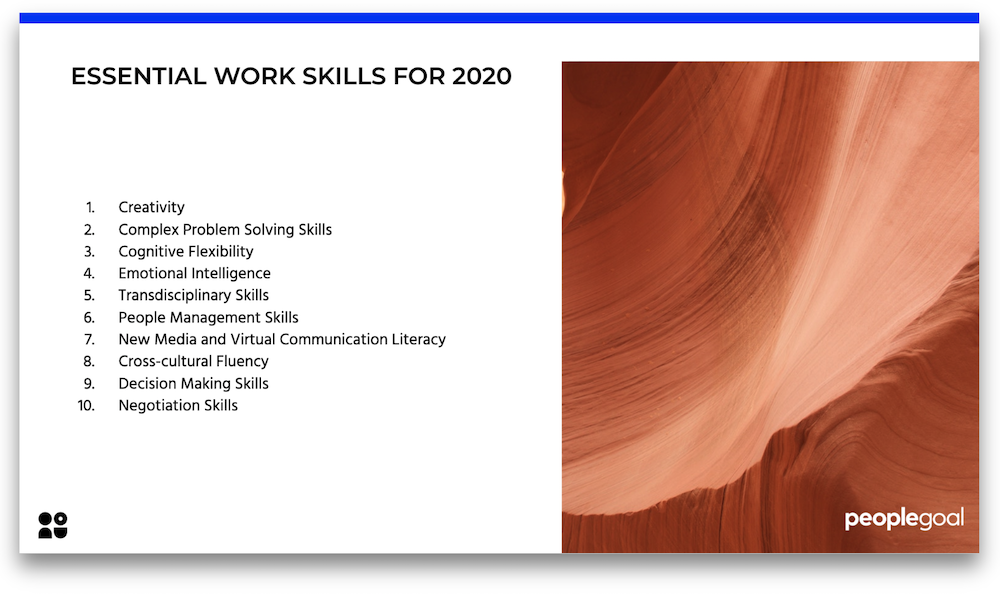Creating a goal process for you and your team sets out the framework for achieving the outcomes of your goals. It also defines not just what you want to achieve but how you’re going to get there. Great goals should stretch an individual to realize their potential, and setting out a clear goal process gives everyone visibility of and accountability for your team’s targets.
Why is it important to set goals?
Setting clear goals gives you a roadmap to focus on. Having an idea of what you want to work on is great, but taking the next step to document your goals really helps you to define your intentions. The goal process forces you to assess what exactly it is you want to achieve and to break that down into the actions you need to take to get there. This allows you to build a realistic picture of the time, resources and support needed to achieve your outcomes and to plan effectively. Monitoring goal progress gives you momentum and a clear visual of how you contribute in to the organization’s progress, and where you need to push yourself and your team to get the best results you can.
How to Set Up a Goal Process in 6 Steps
With a little thought and planning you can create a goal process to set the direction for your team’s progress and get them on the path to success. Here’s how to do that in six steps.

Goal Process Step 1: Define your goal framework
What type of goals work best for you and your team? A great place to start is with SMART goals. For those setting goals for the first time, the SMART system asks you five key questions that frame your goal in clear, actionable terms:
- How is my goal specific?
- How will my goal be measured?
- Is this goal achievable?
- How is my goal relevant?
- When do I need to achieve my goal?
These attributes give teammates a clear but flexible structure on which to develop their objectives. SMART goals can be used for personal and professional goals that incorporate both qualitative and quantitative measurements.
Another popular goal framework is OKRs (Objectives and Key Results). OKRs asks you to create an outcomes-based objective with three to four supporting key results that set out the targets you need to meet, exceed and outperform your goal outcome. OKRs encourage you to set "shoot for the moon" targets that really stretch and challenge you to deliver your best results.
If you’re new to goal setting, our Essential Guide to SMART goals and the Essential Guide to OKRs will give you everything you need to know about the definition, history and relevance of these goal processes.

Goal Process Step 2: Decide the timeline for your goal process
You know best what cadence suits your team’s workflow. Goals are typically set every quarter, but you can also decide to set new goals every month, every 6 months or every year. For smaller, very defined team targets like sales goals, monthly objectives are great to keep you on track in a fast-paced environment. Longer, more strategic projects require new goals every 3-6 months and professional, skills-development type goals can be set annually. For 6-12 month goals your one to ones and check-in meetings become even more crucial to make sure your team is staying on track and keeping their goals on top of mind.
Goal Process Step 3: Consider company objectives
A good team goal process is all about pulling together in the same direction to achieve common outcomes. Alignment to the overall strategic objectives of the business is the best way to make sure your team’s goals are relevant, actionable and meaningful to their role. Successful organizations cascade their goals down from strategic objectives through department, team and individual goals and across all functions. If you’re not able to do this at the company level, you can still plan out your overall team objectives so that employees have a framework on which to align their personal goals.
Goal Process Step 4: Set your goals
Time to get those goals down! It’s always best for team members to set their own goals to encourage autonomy and self-development. Using the relevant goals framework (SMART goals or OKRs) team members should:
- Define the goal. Lay out your goal idea in as much detail as possible.
- Ruthlessly refine the goal. Make sure you’re focusing on only the most important outcomes. It’s tempting to set as many targets as possible while you think of them, but additional detail distracts you from the one clear outcome you want to achieve.
- Set action steps. How are you going to achieve your goal? What resources and support do you need to get there? Setting this out in clear terms ensures you’re aware of the scope of your goal and can plan properly to keep yourself on track.
If you’re not using an online system, make use of our SMART goals template to document your goal. And if you need some inspiration for what you should be working towards, check out our Top 10 Performance Goal Examples for 2020!
Goal Process Step 5: Check-in on goal progress
Just as important as documenting your outcomes is to book regular check-ins to evaluate your goal progress and to keep your team on course to achieve their targets. How often you check in depends on the goal process timeline you created in Step 2. Regular check-ins between an employee and their manager are not only extremely motivating, they allow you to address issues as and when they arise, rather than waiting until the end of the year to realize you’ve gone off track. Combine your goal progress check-ins with a discussion around 360 feedback to get input from colleagues, mentors and clients.
Goal Process Step 6: Evaluate and assess your goals
The last step in the cycle is to evaluate whether the goals were achieved or not and to assess what went well and what could be improved. This doesn’t need to be done in a formal review – less formal one on one discussions are just as effective. Make sure you tackle why a goal went off track and what needs to be put in place to keep goals on course next time. You can also use this conversation to discuss new goals for the next cycle before you repeat your process again.
Get started! Once your goal process is set up and you repeat a couple of cycles you’ll see it becomes even easier to set clear targets and keep your team motivated to meet them.
Ready to 3x Your Teams' Performance?
Use the best performance management software to align goals, track progress, and boost employee engagement.




